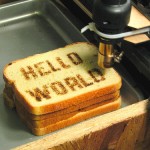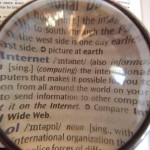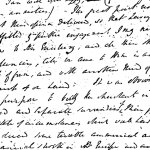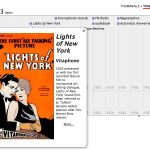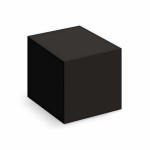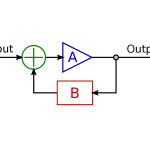Tuesday, October 4th
Overview: In the digital humanities, what are the components of a great research question? How do we compose questions that are not simply about creating “neat” or “cool” digital projects, but that demand new theories and methods? Projects that—through novel forms of production and representation—enable provocative or exciting interpretations? How do we combine social or cultural questions with technical ones? Finally (and most relevant to this week’s meetings), what are some modes of digital research and scholarly communication? That is, how do people present work, through what forms and apperceptions, and under what assumptions about, say, scholarly rigor, argumentation, and legibility? During the next few weeks, we’ll be experimenting with a few modes (e.g., non-linear, distant, close, collaborative, individual, static, dynamic, and multimodal) and the media (e.g., maps, timelines, text, and video) that correspond with them. As we do, we should keep in mind how they correspond—or can correspond—with emerging critical approaches.
Reading Due: The prompt for the Final Project and the Final Project Proposal
Suggested Reading: The CUNY Digital Humanities Resource Guide (consider reviewing syllabi from other digital humanities courses to see what undergraduates in similar classes have done). Also, you might peruse: JSTOR, Project Muse, the Internet Archive, and Wikimedia Commons. If you want to prepare for the lab session, then reading “Knowing…: Modeling in Literary Studies” by Willard McCarty is a good idea. I will refer to it several times, and McCarty’s work on modeling is central to the field.
Assignment Due: Your Final Project Proposal. Based on the content of your proposals, during Tuesday’s lab session your clusters will not only collectively determine their respective research questions, but also start outlining how their respective inquiries will be organized (e.g., what would a database or spreadsheet for your research look like? what would be the fields?). We’ll also look to Google Docs and Evernote to help us organize inquiry.
Outcomes: Each cluster should draft a research question and organize a tangible mechanism for collaboratively gathering and organizing evidence. Of note, all evidence should be tagged with (or categorized through) geographic and temporal metadata. (I’ll explain why during the lab.)
Friday, October 7th
Overview: What is multimodal scholarly communication? How do we synthesize various forms of evidence to make persuasive arguments about history and culture? What are some examples of this kind of work? For your own projects, what forms of evidence (e.g., what types of media) will be involved? Why? To what effects?
Reading Due: “Media Studies and the Digital Humanities” by Tara McPherson; please also give Kairos and Vectors a gander (e.g., peruse of few articles in them).
Suggested Reading: (1) Student projects from English 239 at ISU, (2) Learning from YouTube by Alexandra Juhasz and Craig Dietrich, (3) Precision Targets by Caren Kaplan, Erik Loyer, and Ezra Claytan Daniels, (4) “DH: The Name that Does No Favors” by Shannon Mattern, (5) “From Text to . . . Something More” (from Planned Obsolescence) by Kathleen Fitzpatrick, and (6) MediaCommons.
Suggested Viewing: “A DIY Punk Scene and Open Access Scholarship” (below) by jasondr11. (What happens when scholarly arguments are presented in video form?)
Assignment: Blog Entry #3 (question to be circulated during class on Tuesday, October 4th). Also be prepared to speak specifically about an article in Kairos or Vectors. From what you gather, what are the stakes of multimodal scholarly communication?
Outcomes: Articulate at least five ways that multimodal scholarship can foster new interpretative practices. Also articulate a few drawbacks or critiques of multimodal approaches. Identify some available (e.g., on campus) software and hardware for composing multimodal scholarship.
Index image is a screenshot of JSTOR’s Data for Research tool.
